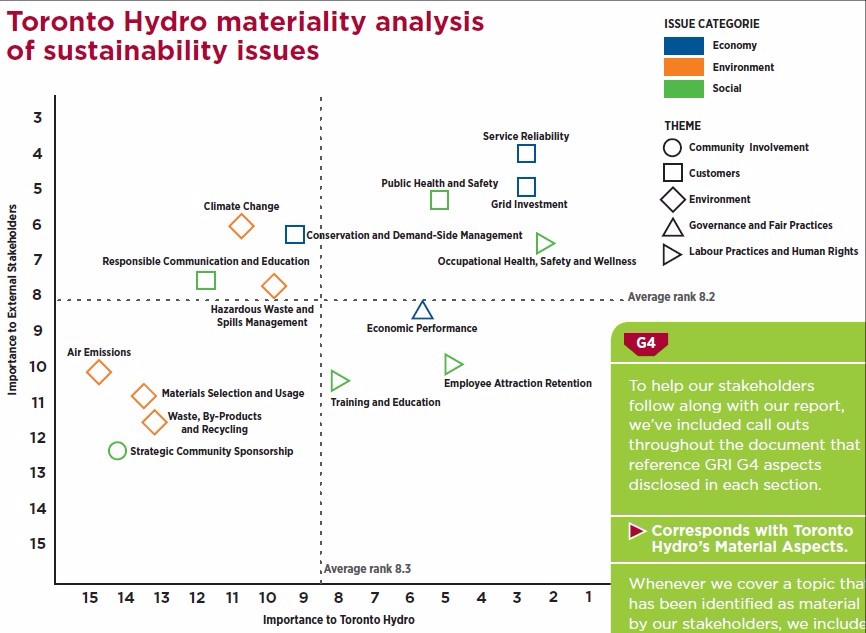
A version of this article was originally published on December 1, 2015 on Greentech Media.
By Michael O’Boyle and Sonia Aggarwal
Market forces are precipitously changing the role of utilities. Private companies are offering customers more choices and control over their electricity through energy efficient products and services, demand management, self-generation like rooftop solar, smart electric vehicle chargers, and on-site storage. At the same time, the role of utility-scale wind and solar is growing, as costs have plummeted since 2010.
Whether or not utilities, their boards, and their regulators keep up with these market forces depends mightily on the utility ownership model. For a majority of electricity consumers in the U.S., private companies (investor-owned utilities, or IOUs) provide electricity service, and their commissions can use performance-based regulation to align incentives with customer values. But another important tranche of the population is served by publicly-owned utilities (POUs), non-profit entities directly governed through a democratic body. These utilities must also adapt to new customer demands and market forces, and this transition is just as challenging for public utility management and their boards.
Very few resources exist on how POUs can improve performance, which is why we have put together a new set of case studies and lessons on “Maximizing Performance of Public Power Utilities” to illuminate some examples of how POUs can deliver the outcomes desired by their customer-owners. This new piece of research focuses on high-level performance management, but other changes—e.g., rate design, as touched on by 51st State submissions from the American Public Power Association and the National Rural Electric Cooperative Association—are also important levers for improving POU performance.
The world of a publicly-owned utility
POUs serve about a quarter of all customers in the U.S., but their governance and ownership structures are diverse and their constituencies range from large cities to sparsely populated rural areas. POUs fall into three main categories: cooperatives (co-ops are private, non-profit entities owned by their customers and governed by a customer-elected board), municipal utilities (munis are owned by a city and governed either by a city council or an appointed board), and public utility districts (PUDs are government agencies designed to fill a utility role, either within an existing government agency or in its own jurisdiction).
Though they have diverse governance structures, these three kinds of POUs possess many commonalities that justify examining them together. POUs can be pulled in many directions that go beyond strict utility concerns, including stimulating local economic development and collecting new revenue for municipal funds or co-op dividends. Many POUs are also challenged by lack of capacity; many POUs represent small jurisdictions and don’t have the financial and technical resources to stay current with new technologies or broader market trends. Here, we lay out three steps for public power governing boards to consider:
Step One: Take “no regrets” actions… like discovering public priorities
First, there are a couple of very low-cost, no regrets steps that POUs can take today: collect diverse perspectives (customers and other local interests), work with folks to define the outcomes they want, and develop repeatable metrics to measure performance against those outcomes. No doubt, this takes some work upfront, but many existing resources can help, including this initial list of metrics offered by Synapse. And the upfront work is worth it: the process can improve operational efficiency and help utilities take advantage of modern technologies to deliver customer needs. Two examples…
For Toronto Hydro, a large municipal utility, the first step toward improving performance was engaging a diverse set of local interests to prioritize performance categories and put everyone on the same page about each other’s desired outcomes. In 2013-2014, Toronto Hydro surveyed the City of Toronto, customers, contractors, suppliers, industry associations, public interest organizations, government, academia, and employees:
 Source: Toronto Hydro 2014 Corporate Responsibility Report
Source: Toronto Hydro 2014 Corporate Responsibility Report
Since they completed that first survey, Toronto Hydro has begun to track performance by compiling “scorecards” in four categories: customer focus, operational effectiveness, public policy responsiveness, and financial performance. The scorecard reports quantitative metrics to indicate whether performance has been achieved and whether the utility is continuously improving.
Simply having a conversation with local interests about what they really want out of the electric system can foster important alignment, particularly for POUs that consider a wider range of policy objectives. Associated quantitative metrics should be repeatedly measured and recorded to improve POUs’ ability to deliver customer value.
Incorporate metrics into Integrated Resource Plans
Performance metrics should not be developed in isolation. Instead, to maximize performance in each of the measured areas, POUs that own generation resources can integrate performance metrics into their Integrated Resource Plans (IRP). Public IRP processes can help shed light on potentially divergent performance goals, and create a forum for utilities, board managers, and other local interests to reach consensus on the best way forward before major investments are undertaken.
In 2014, the Austin City Council adopted a resolution, which set a 65 percent renewable energy goal for 2025 and capacity targets for solar, wind, and storage, forcing Austin Energy (a large muni) to update its ten-year IRP. At the same time, the Council also mandated that rates not increase more than two percent annually. Austin Energy’s first analysis found that the resolution would raise rates by an average of six percent annually, so the muni instead proposed a cost-saving plan that would reach 50 percent renewables by 2025.
City councilmembers and environmental advocates were dissatisfied with the lower renewable energy target, so Austin Energy further revised its proposal to include several innovative mechanisms to reach 55 percent renewables – including demand response and energy efficiency, reverse auctions to minimize the costs and risks of renewable power procurement, new thermal and battery storage technology, and biannual planning updates. Through a public IRP process with metrics clearly reported, Austin Energy was able solicit feedback that ignited innovation and landed on a set of outcomes that worked for everyone, allowing the utility to keep rates below the Texas average while setting country-leading clean energy standards.
Step Two: Explore evolutions in governance… clarify board and management roles
If POUs are still not delivering value to customers after the “no regrets” actions described above are taken, government agencies, cities, and communities can explore ways to enhance board governance. Two examples demonstrate how evolutions in governance can improve overall utility performance.
In 2002, the board of the Sacramento Municipal Utility District (SMUD) had become disconnected from utility executives’ decision-making process. To remedy this disconnect and improve governance, the board and executive team recognized that the board must redefine its role and clarify its strategic direction while giving utility executives sufficient leeway to accomplish the city’s goals.
So, SMUD’s board implemented twelve “Governance Process Policies” requiring it to set and measure utility achievement of performance goals to ensure board governance supports utility performance. The new policies essentially clarified that the board should focus on defining high-level outcomes for the utility, and utility executives should be free to decide how to accomplish those high-level objectives.
As a result, SMUD’s board regularly revises its goals in response to public policies and changing market conditions. According to SMUD’s annual report, this has helped make it California’s top-rated electric utility in customer satisfaction, while beating comparable utilities on average residential electric bills and keeping pace with state renewable energy targets. To boot, self-evaluations by the board and utility management team indicate that effectiveness of the board increased dramatically from 2002-2012.
Option Three: If performance lags, consider more drastic measures
If, after implementing the changes described in steps one and two, utility governing boards are further interested in keeping utility management focused on its core strengths, they can consider bringing in a third-party to take on a subset of utility goals.
Vermont Efficiency Investment Corporation (VEIC) is a publically-owned non-profit spin-off that serves both POUs and the IOU in Vermont, and its singular function is to pursue energy efficiency. This example demonstrates how utility functions can remain publicly-owned while a non-profit third-party improves performance.
Since 2000, VEIC has saved customers 13.7 million megawatt-hours (MWh), meeting or exceeding many of its efficiency performance metrics. This singular focus on efficiency allows sophisticated customer outreach and data-driven identification of the best opportunities for energy savings, making Vermont a national leader in efficiency, according to the American Center for an Energy Efficient Economy.
VEIC’s board also adjusts the utility’s compensation by up to three percent based on performance—and this compensation gets passed through directly to employees. This further incents good performance by “increasing cash reserves, improving the credit rating and keeping costs of debt low; mitigating risks during economic downturn; and maintaining a culture of continuous improvement and competition.”
As a more drastic option for utilities struggling to achieve important outcomes, a third-party non-profit is an interesting model for improving performance in a specific area.
Specific recommendations for improving POU performance
Though by no means an exhaustive list, these steps can help POUs and their governing bodies improve performance and meet new power sector goals.
1. Take “no regrets” actions. Principles include:
- Convene diverse perspectives (from customers and other local interests) to define top-line goals for the electricity system. Develop a list of performance metrics that reflect those goals.
- Require utility management to regularly report performance against those metrics publicly. Simply beginning to measure performance can reveal substantial opportunities for savings.
- Encourage utilities to integrate performance goals and metrics into public integrated resource plans, and continuously update those plans to reflect changing market conditions and public priorities.
2. Explore evolutions in governance. Principles include:
- Clarify the board’s purpose in setting performance targets for the utility; clearly draw the line between board decisions and utility management decisions.
- Establish a schedule for periodic board review of utility performance metrics.
- Define standards and actions required for board excellence, focusing on outcomes that indicate effective governance. Incorporate periodic self-evaluation into routine activities of governing boards and utility executives.
3. If performance lags, consider more drastic measures. Options include:
- Consider decoupling public utility revenue from volumetric sales as a way to reduce financial uncertainty and drive energy efficiency.
- Consider linking a share of employee compensation to utility performance.
- Consider spinning off utility functions that continually underperform into separate, non-profit entities.
